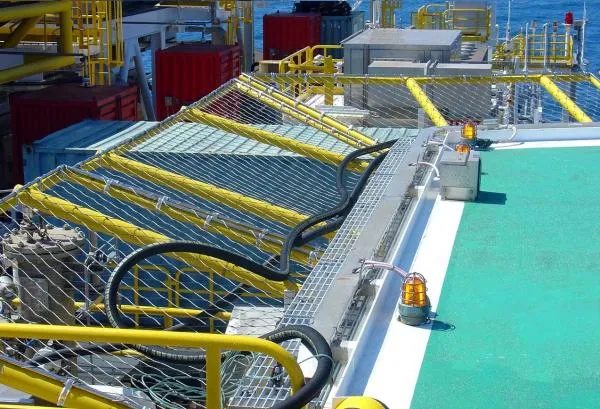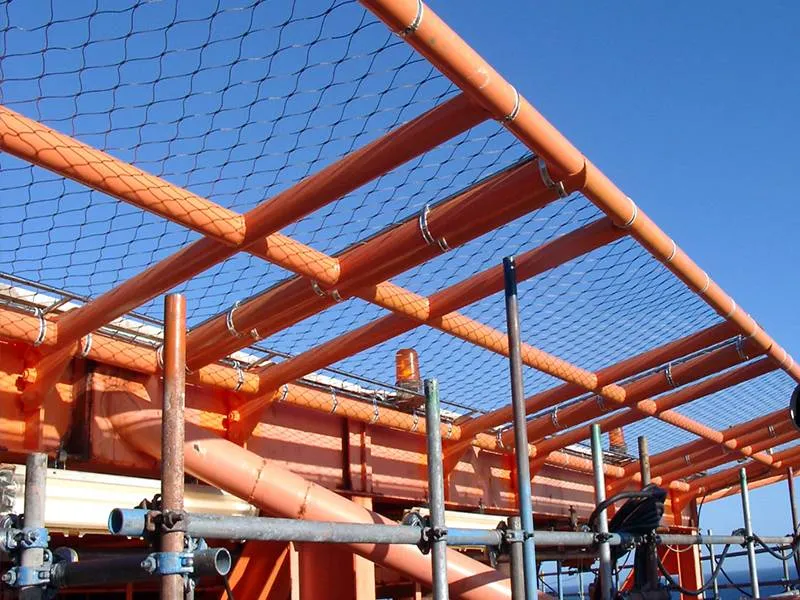- Industrial zone, South of Anping Town, Hengshui, Hebei, China.
- sales@hfpetromesh.com
- +86-18931809706
 Afrikaans
Afrikaans  Albanian
Albanian  Amharic
Amharic  Arabic
Arabic  Armenian
Armenian  Azerbaijani
Azerbaijani  Basque
Basque  Belarusian
Belarusian  Bengali
Bengali  Bosnian
Bosnian  Bulgarian
Bulgarian  Catalan
Catalan  Cebuano
Cebuano  Corsican
Corsican  Croatian
Croatian  Czech
Czech  Danish
Danish  Dutch
Dutch  English
English  Esperanto
Esperanto  Estonian
Estonian  Finnish
Finnish  French
French  Frisian
Frisian  Galician
Galician  Georgian
Georgian  German
German  Greek
Greek  Gujarati
Gujarati  Haitian Creole
Haitian Creole  hausa
hausa  hawaiian
hawaiian  Hebrew
Hebrew  Hindi
Hindi  Miao
Miao  Hungarian
Hungarian  Icelandic
Icelandic  igbo
igbo  Indonesian
Indonesian  irish
irish  Italian
Italian  Japanese
Japanese  Javanese
Javanese  Kannada
Kannada  kazakh
kazakh  Khmer
Khmer  Rwandese
Rwandese  Korean
Korean  Kurdish
Kurdish  Kyrgyz
Kyrgyz  Lao
Lao  Latin
Latin  Latvian
Latvian  Lithuanian
Lithuanian  Luxembourgish
Luxembourgish  Macedonian
Macedonian  Malgashi
Malgashi  Malay
Malay  Malayalam
Malayalam  Maltese
Maltese  Maori
Maori  Marathi
Marathi  Mongolian
Mongolian  Myanmar
Myanmar  Nepali
Nepali  Norwegian
Norwegian  Norwegian
Norwegian  Occitan
Occitan  Pashto
Pashto  Persian
Persian  Polish
Polish  Portuguese
Portuguese  Punjabi
Punjabi  Romanian
Romanian  Russian
Russian  Samoan
Samoan  Scottish Gaelic
Scottish Gaelic  Serbian
Serbian  Sesotho
Sesotho  Shona
Shona  Sindhi
Sindhi  Sinhala
Sinhala  Slovak
Slovak  Slovenian
Slovenian  Somali
Somali  Spanish
Spanish  Sundanese
Sundanese  Swahili
Swahili  Swedish
Swedish  Tagalog
Tagalog  Tajik
Tajik  Tamil
Tamil  Tatar
Tatar  Telugu
Telugu  Thai
Thai  Turkish
Turkish  Turkmen
Turkmen  Ukrainian
Ukrainian  Urdu
Urdu  Uighur
Uighur  Uzbek
Uzbek  Vietnamese
Vietnamese  Welsh
Welsh  Bantu
Bantu  Yiddish
Yiddish  Yoruba
Yoruba  Zulu
Zulu
- Afrikaans
- Albanian
- Amharic
- Arabic
- Armenian
- Azerbaijani
- Basque
- Belarusian
- Bengali
- Bosnian
- Bulgarian
- Catalan
- Cebuano
- Corsican
- Croatian
- Czech
- Danish
- Dutch
- English
- Esperanto
- Estonian
- Finnish
- French
- Frisian
- Galician
- Georgian
- German
- Greek
- Gujarati
- Haitian Creole
- hausa
- hawaiian
- Hebrew
- Hindi
- Miao
- Hungarian
- Icelandic
- igbo
- Indonesian
- irish
- Italian
- Japanese
- Javanese
- Kannada
- kazakh
- Khmer
- Rwandese
- Korean
- Kurdish
- Kyrgyz
- Lao
- Latin
- Latvian
- Lithuanian
- Luxembourgish
- Macedonian
- Malgashi
- Malay
- Malayalam
- Maltese
- Maori
- Marathi
- Mongolian
- Myanmar
- Nepali
- Norwegian
- Norwegian
- Occitan
- Pashto
- Persian
- Polish
- Portuguese
- Punjabi
- Romanian
- Russian
- Samoan
- Scottish Gaelic
- Serbian
- Sesotho
- Shona
- Sindhi
- Sinhala
- Slovak
- Slovenian
- Somali
- Spanish
- Sundanese
- Swahili
- Swedish
- Tagalog
- Tajik
- Tamil
- Tatar
- Telugu
- Thai
- Turkish
- Turkmen
- Ukrainian
- Urdu
- Uighur
- Uzbek
- Vietnamese
- Welsh
- Bantu
- Yiddish
- Yoruba
- Zulu
feb . 14, 2025 19:29
Back to list
Swage-Locked Steel Grating
Metal gratings are a crucial component in various industrial applications, providing safe and robust flooring solutions while offering excellent load-bearing capacities. For industries ranging from manufacturing to energy, the choice of the correct metal grating size not only impacts performance but also ensures safety and compliance with industry standards. This article delves into the intricacies of metal grating sizes, aiming to provide insight into their selection and application, enriched by years of practical experience and industry expertise.
Furthermore, authority in the metal grating industry stems from the historical evolution of standards and innovations. Adhering to recognized standards such as those set by the American National Standards Institute (ANSI) and the Occupational Safety and Health Administration (OSHA) can greatly influence the choice of grating size. These standards often dictate specific requirements for spacing, material choice, and load ratings ensuring that gratings meet safety and functional benchmarks. Trustworthiness in this context is built upon delivering grating solutions that comply with both regulatory standards and site-specific needs. Collaboration with credible manufacturers and suppliers who provide comprehensive testing certifications can reinforce this trust, highlighting the importance of due diligence in the procurement process. In conclusion, selecting the appropriate metal grating size is not merely a decision based on immediate needs but a strategic one that involves a nuanced understanding of materials, standards, and the operational environment. By leveraging professional insights, adhering to industry norms, and committing to ongoing maintenance, businesses can optimize their investment in metal gratings, ensuring safety and performance for years to come. Whether in heavy-duty industrial applications or more aesthetic commercial uses, the right metal grating size is crucial for efficacy and security.


Furthermore, authority in the metal grating industry stems from the historical evolution of standards and innovations. Adhering to recognized standards such as those set by the American National Standards Institute (ANSI) and the Occupational Safety and Health Administration (OSHA) can greatly influence the choice of grating size. These standards often dictate specific requirements for spacing, material choice, and load ratings ensuring that gratings meet safety and functional benchmarks. Trustworthiness in this context is built upon delivering grating solutions that comply with both regulatory standards and site-specific needs. Collaboration with credible manufacturers and suppliers who provide comprehensive testing certifications can reinforce this trust, highlighting the importance of due diligence in the procurement process. In conclusion, selecting the appropriate metal grating size is not merely a decision based on immediate needs but a strategic one that involves a nuanced understanding of materials, standards, and the operational environment. By leveraging professional insights, adhering to industry norms, and committing to ongoing maintenance, businesses can optimize their investment in metal gratings, ensuring safety and performance for years to come. Whether in heavy-duty industrial applications or more aesthetic commercial uses, the right metal grating size is crucial for efficacy and security.
Share
Latest news
-
Welded Steel Bar Grating: The Rugged Industrial Flooring Solution Built for Load and LongevityNewsJun.24,2025
-
Steel Walkway Grating: Reliable, Resilient, and Built for Every StepNewsJun.24,2025
-
Shale Shaker Screen for Sale: Optimize Drilling Efficiency with Precision Screening PowerNewsJun.24,2025
-
Shaker Screen for Sale: Elevate Your Drilling Efficiency with Durable Separation SolutionsNewsJun.24,2025
-
Press Locked Steel Grating: Industrial Strength with Precision Fit for Heavy-Duty ApplicationsNewsJun.24,2025
-
Perimeter Safety Netting: The Critical Safety Upgrade for Every HelipadNewsJun.24,2025